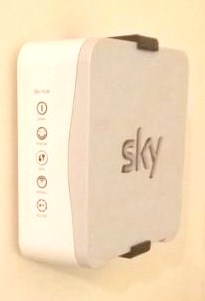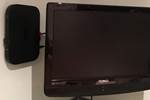3 Companies That Wouldn't Exist Without 3D Printing
3D printing’s affordability enables the existence of companies that wouldn’t be able to manufacture their products conventionally. Here are just three examples.
3D printing is a manufacturing technology, so it’s no surprise that we frequently encounter 3D printers in facilities that are already engaged in some type of manufacturing — such as machining, casting and injection molding. These are companies that were already making things, and are turning to additive manufacturing (AM) as another avenue toward this goal.
However, AM also opens up opportunities to companies that would never have become manufacturers otherwise. 3D printing’s affordability, compressed supply chain, and ability to build complex objects without tooling all contribute to this trend.
Here are just three examples of companies like this, manufacturers that wouldn’t be able to make their products without 3D printing:

Defox
This Oregon-based startup is the manufacturer of the Periscope Case, a smartphone case that uses a mirror to allow for capturing photos and video at different angles. (See it in action.) The case’s design includes features that would be impractical to injection mold, and the quantities needed would make molding cost-prohibitive. Instead, Defox has small batches 3D printed to fulfill orders placed through Amazon. READ MORE

Pengraff UK
Owners Rebekah and Matthew Farmer started Pengraff UK after using their personal 3D printer to solve a problem in their own home. The couple moved their router out of the way using a 3D printed wall bracket, and they've since built a business making similar mounting devices for various home electronics as well as bespoke items. 3D printing makes this business economically viable and allows its owners to live out their values for more sustainable manufacturing and consumption by producing on demand, near to the customers, using filament made from recycled materials. READ MORE

DustRam
The DustRam, a chipping hammer accessory, was invented by Jack King for use in his flooring demolition business. The original device was assembled from outsourced, machined parts and took months to manufacture. King’s decision to purchase a 3D printer and print this part in house from nylon accelerated the production time to just days, and transformed the company into a manufacturer. Rather than outsource production, DustRam now 3D prints more than 60 unique parts for its own products and even offers printing services. READ MORE
Related Content
-
How Machining Makes AM Successful for Innovative 3D Manufacturing
Connections between metal 3D printing and CNC machining serve the Indiana manufacturer in many ways. One connection is customer conversations that resemble a machining job shop. Here is a look at a small company that has advanced quickly to become a thriving additive manufacturing part producer.
-
3D Printing with Plastic Pellets – What You Need to Know
A few 3D printers today are capable of working directly with resin pellets for feedstock. That brings extreme flexibility in material options, but also requires greater knowledge of how to best process any given resin. Here’s how FGF machine maker JuggerBot 3D addresses both the printing technology and the process know-how.
-
Video: 5" Diameter Navy Artillery Rounds Made Through Robot Directed Energy Deposition (DED) Instead of Forging
Big Metal Additive conceives additive manufacturing production factory making hundreds of Navy projectile housings per day.

.jpg;width=70;height=70;mode=crop)













